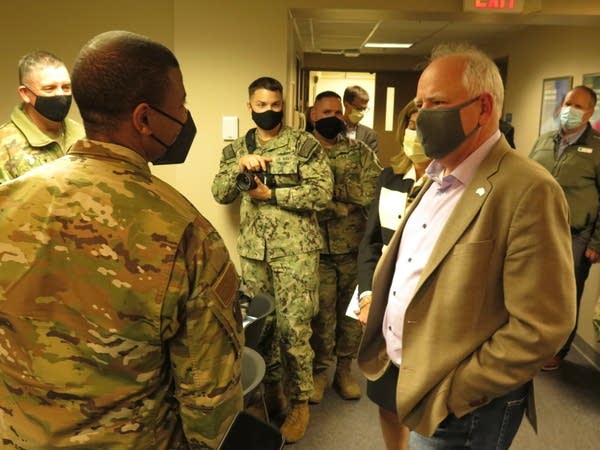Emergency care exceeding HCMC's capacity, military begin training in to help

Minnesota Gov. Tim Walz chats with U.S. Air Force Lt. Col Brandon Shealey (left) who's supervising 23 military medical staffers on temporary assignment at HCMC.
Matt Sepic | MPR News
Go Deeper.
Create an account or log in to save stories.
Like this?
Thanks for liking this story! We have added it to a list of your favorite stories.


